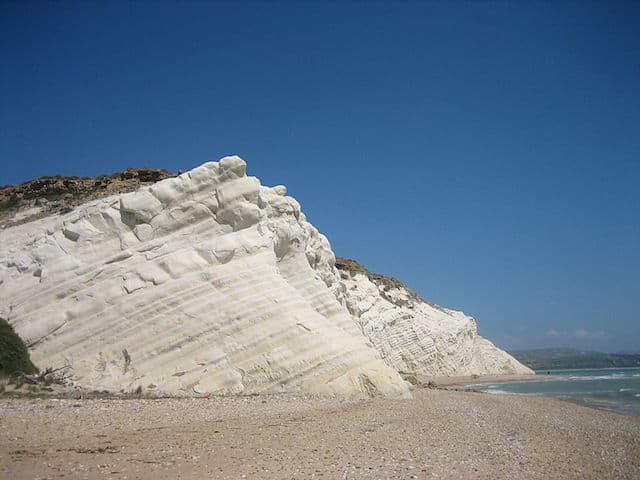Was Water Available On Mars? Gypsum Formation Process Could Hold Answer
A team of European researchers led by Dr. Thomas Stawsky from University of Leeds and GFZ Potsdam may help scientists determine the plausibility of water being available on the red plant - Mars. The team focused their study on how 'Gypsum' (the mineral crucial to the commercial production of Plaster of Paris) forms and in the process not only found new ways to interpret availability of water on Mars, but also brought about a new energy-efficient way to produce plaster. The special angle here is that Gypsum is one of those rare minerals that is not only found on the surface of Earth, but also on the surface of Mars.

Image Credit: Wikipedia
As of now, the process of formation of Gypsum was thought to be a simple one-step process. However, the recent findings of the multinational team of geochemists show that it's a much more complex, four-step process.
In the four-step process, the team discovered that in the beginning of the reaction the chain, the mineral gains most of its final properties. During the first step, many small elongated particles form 'bricks' which collect, arrange and self-assemble in later stages to form Gypsum crystals.
An understanding of the breakdown of each individual step in the formation process, scientists now believe that they could specifically target a certain stage such as arresting the reacting at the step when only nano-bricks are formed. This way, they could directly create a highly reactive precursor of plaster.
In traditional mechanism, production of plaster from Gypsum involves a high-energy heating process. With the arrest of reaction, scientists can now not only reduce energy consumption, they would also bring down the overall production cost and in turn reduce the process's carbon footprint.
By applying these results, the team is confident that they could also help understand the presence of hydrological matter on the crust of Mars as well as that on other planets.
What are your thoughts about the presence of water on Mars and how that would affect our space research and other endeavors related to the cosmos? Share with us in comments below.
Source: #-Link-Snipped-#

Image Credit: Wikipedia
As of now, the process of formation of Gypsum was thought to be a simple one-step process. However, the recent findings of the multinational team of geochemists show that it's a much more complex, four-step process.
In the four-step process, the team discovered that in the beginning of the reaction the chain, the mineral gains most of its final properties. During the first step, many small elongated particles form 'bricks' which collect, arrange and self-assemble in later stages to form Gypsum crystals.
An understanding of the breakdown of each individual step in the formation process, scientists now believe that they could specifically target a certain stage such as arresting the reacting at the step when only nano-bricks are formed. This way, they could directly create a highly reactive precursor of plaster.
In traditional mechanism, production of plaster from Gypsum involves a high-energy heating process. With the arrest of reaction, scientists can now not only reduce energy consumption, they would also bring down the overall production cost and in turn reduce the process's carbon footprint.
By applying these results, the team is confident that they could also help understand the presence of hydrological matter on the crust of Mars as well as that on other planets.
What are your thoughts about the presence of water on Mars and how that would affect our space research and other endeavors related to the cosmos? Share with us in comments below.
Source: #-Link-Snipped-#
0

